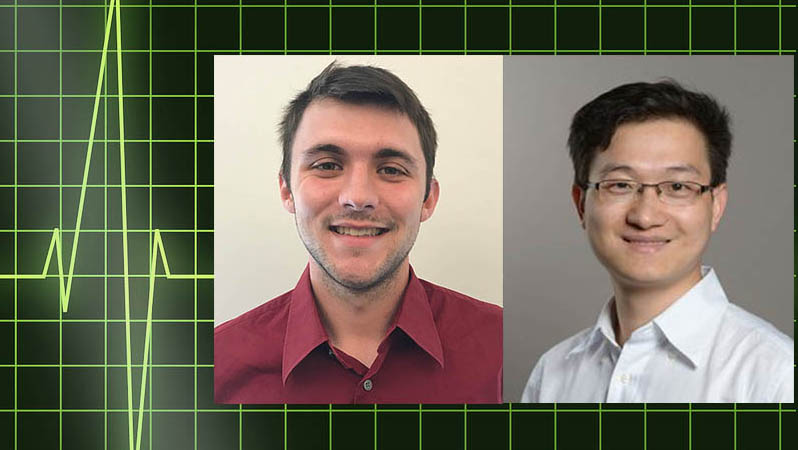January 04, 2022

A Mizzou Engineering team is developing a system that will monitor vital signs and may someday be able to alert people when they need to seek medical care.
The system includes a finger clip with two sensors that use optical light to penetrate blood vessels, said Jian Lin, associate professor and William R. Kimel Faculty Fellow in mechanical and aerospace engineering. It then measures how fast blood flows from one sensor to the other, providing information that can then be used to calculate blood pressure, heart rate, blood oxygen saturation, respiratory rate and temperature.
“These vital signs have strong correlations with certain diseases such as COVID-19, influenza and lung-related diseases,” Lin said. “Using machine learning algorithms, the system can monitor changes in vital signs as time goes by and provide an alert when people need to see a doctor.”
Lin and Richard Byfield, a PhD student, demonstrated its ability to predict blood pressure on 26 student participants. The system predicted systolic, or maximum, blood pressure with 88% accuracy.
They outlined their results in this month’s issue of IEEE Sensors Journal, under the umbrella of the Institute of Electrical and Electronics Engineers.
The paper is just the first step, Lin said. Now, Byfield is developing a database of diseases that can be diagnosed based on vital signs. When completed, the system will be able to compare a person’s measurements against the database to indicate the presence of disease.
“The input will be all five vital signs, and the output will be to tell you if you’re healthy or at risk of a specific disease,” Byfield said. “We’re using active learning, which means the system is learning what your ranges are in real time and will update the model as it receives new information.
The research team has filed a preliminary patent for the system, which they plan to commercialize for at-home monitoring.
Health care professionals have indicated the need for the device in clinical settings, as well, Byfield said.
“We interviewed 30 nurses and the number one problem they cite is the number of devices they have to use,” he said, adding that vital signs often spike when patients are uncomfortable in a doctor’s office. “Your breathing rate changes, your heart rate changes, your blood pressure changes.”